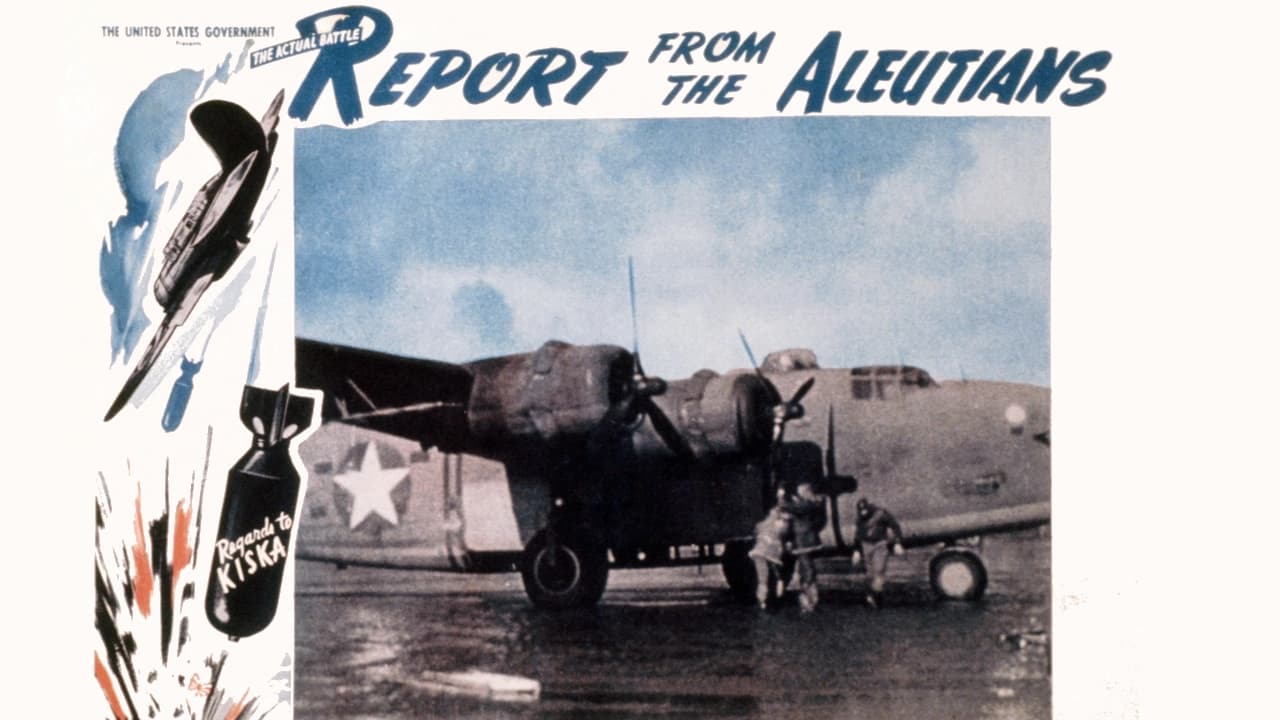



Surprisingly incoherent and boring
A lot of perfectly good film show their cards early, establish a unique premise and let the audience explore a topic at a leisurely pace, without much in terms of surprise. this film is not one of those films.
View MoreWhile it doesn't offer any answers, it both thrills and makes you think.
View MoreIt really made me laugh, but for some moments I was tearing up because I could relate so much.
View MoreDuring the war, Hollywood became an official propaganda arm of the US government. This unusual relationship meant that Hollywood could use its money and expertise to make high quality films...much higher than the military itself could normally make. That's why the likes of John Ford and Frank Capra made documentaries...very good ones at that. In the case of "Report from the Aleutians", the young but very successful John Huston helmed this project.The film is about a portion of WWII that few would remember today. Believe it or not, war DID affect Alaska and some tough battles between Japanese and American troops occurred. This coincided, at times, with the attack on Midway Island....as the Aleutian attack was meant as a diversion...one that ultimately failed.Using excellent footage of the day, nice narration (by the director's father, Walter) and an overall high quality of the project make this one worth seeing...especially if you are a history lover like me.
View MoreOne of John Huston's contributions to the war effort. His engaging voice narrates the facts of being in the armed forces and stationed on one of the Aleutian Islands, which extend southwestward from Alaska. The narration begins with an unsparing look at the geography of the archipelago -- rough and volcanic, treeless, and a merciless climate.By the time of this release, the Japanese had landed on Kiska, one of the outer islands, and had made a naval feint to distract the US fleet from a defense of Midway. The feint failed. The on-and-off conflict with the Japanese went on for some time, mostly consisting of our bombing their positions whenever the weather allowed. In the end, the US Army landed on the Japanese-held islands only to find they had folded their tents and silently stolen away.The documentary is kind of stuck with a description of humdrum work in a dreary place, leading to an extended salute to the men who run the supplies in and out of Dutch Harbor, the engineers who drive the bulldozers. The men wear old-fashioned campaign hats, carry Springfield rifles with old-fashioned long bayonets, and some wear the broad-brimmed pre-war steel helmets.We see the usual scenes. Mail call is a treasure. The food is awful -- powdered eggs and canned this-and-that. They play old songs on guitars and harmonicas. Everyone attends services by Catholic, Protestant, and Jewish chaplains. No booze, no women. However, the troops are cheerful and morale is high. Nothing can blunt the keenness of these gum-chewing boys in their parkas.There are some finely done shots of airplanes taking off and landing -- P-39s, P-38s, P-40s, B-17s, B-26s, and B-24s. It's startling to see an airplane like the P-38, with its tricycle landing gear, plowing at speed through a foot of water and creating a moving fountain of gray that masks the airplane itself except for its dark nose which juts out ahead of the watery curtain.The film ends with a bombing mission of nine B-17s over Kiska. It's no more alluring than life back in Dutch Harbor although far more dangerous. There are bursts of flak, and though there have been casualties on other missions, this one returns safely.
View MoreIn recognizing Memorial Day, I decided to watch some wartime documentaries made by John Huston during World War II starting with this one which took place at the outpost of Adak concerning a bombing mission over Japan-occupied Kiska. Huston narrates with some additional voice overs by his father, Walter. Suitable mood music permeates most of the film which adds to the color footage's appeal. When the actual flying sequences are shown, one gets some sense of excitement though since dialogue is kept to a minimum and there are few explosions, it doesn't seem Hollywood-made to provide unbridled joy to victory. Worth seeing. Watched this on Internet Archive.
View MoreDirector John Huston, while a member of the U.S. Army Signal Corps in 1943, creates an Academy Award winning documentary, which he narrates with assistance from his actor father Walter, treating of the Armed Forces' successful effort to prevent the fall of the Aleutian Islands to advancing Japanese troops who had captured several islets. Although no claim can be reasonably made that this location was of major strategic importance during the War, it presented enormous tactical and logistic difficulty for those assigned there, and Huston's color film demonstrates the determined ensemble work upon the outpost of Adak by a wide range of military specialists who combat loneliness and boredom along with notably severe weather conditions. The work was made over a six month period, and is climaxed by the preparations for, followed by an actual filming of, a bombing run over Japanese-occupied Kiska, wherein Huston nearly lost his life, and which is significant for its combat footage and for the atmosphere of suspense present in the viewer who wonders if all will return safely.
View More